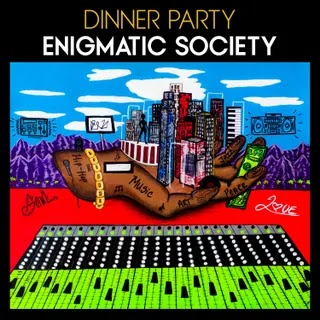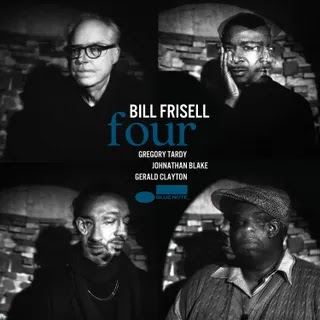Long a collectors’ holy grail, this 1975 session is the keyboardist and bandleader’s only known recording: a fierce half hour that pushes the limits of jazz, funk, and R&B to their breaking point.
Nobody is quite sure who Roland Haynes is. As far as anyone knows, the keyboardist and bandleader played on precisely one record—his own, this one, from 1975—and then disappeared, leaving behind a half hour of ankle-snapping jazz-funk played so fast and with such meticulousness it’s practically comical. What’s more, because Haynes shares duties on Second Wave with one-time Pharoah Sanders sideman Kirk Lightsey, and nobody thought to write down whose keyboard is whose, we can’t even be sure what Haynes is doing on this record, which means he’s a ghost in his own machine, playing with ferocious anonymity from either the extreme left or extreme right margin of producer Gene Russell’s beautifully wide stereo image. When it comes to obscurity, Roland Haynes makes Jandek look like DJ Khaled.
Despite this frankly incredible obfuscation, Second Wave reveals plenty about its creator—most obviously, that he was intent on pushing the willing containers of jazz, funk, and R&B to their absolute breaking point with as many notes as he could cram into them. His quartet flies through these six songs with the virtuosity of a prog group approaching terminal velocity, their playing buoyed by unalloyed joy and the steady pulse of Henry Franklin’s bass. Second Wave is a funk record playing by jazz’s rules—mostly in order to break them—but it possesses a sweetheart streak that puts Haynes’ group in conversation with Brazilian legends Azymuth, who also made their debut in 1975. Like much of the Black Jazz catalog, which languished for decades following the label’s shuttering later that year, Second Wave is possessed of the kinds of breaks and riffs that have made it a holy grail for collectors for decades. Now reissued by Real Gone, Haynes’ only known recorded work should take its rightful place as a minor but crucial piece of one of jazz’s most innovative eras.
Black Jazz began releasing records in Oakland in 1971 and positioned itself as the Bay Area’s answer to Chicago’s Association for the Advancement of Creative Musicians and Brooklyn’s Collective Black Artists. Label heads Russell and Dick Schory proposed to release work exclusively by Black musicians, and in their embrace of then-ascendant spiritual jazz and ongoing experiments in free jazz, they explicitly rejected orthodoxy. This was politically and spiritually conscious music made by artists who were as influenced by poets and comics like Nikki Giovanni and Dick Gregory as they were by Archie Shepp, McCoy Tyner, and Alice Coltrane.
At first blush, it’s not totally clear how Second Wave fits in this milieu. While the album’s two ballads—the opening “Eglise” and breath-catching “Aicelis”—both capture a bit of reflected starshine from Lonnie Liston Smith’s piano-based astral journeys, the band under Haynes’ direction doesn’t seem to be in pursuit of the transcendental. They’re far too locomotive for spiritual jazz, and much too melodic for free jazz. Like Herbie Hancock, whose embrace of funk and danceable grooves in Head Hunters had turned jazz on its ear two years prior, Haynes’ protest against the status quo leads him into more populist territory, making things difficult for the performers but not their listeners. Indeed, following these four as they navigate the intricacies of Haynes’ arrangements often feels like watching a Formula 1 race: They sprint along at extraordinary speeds on the straightaways, then navigate tight turns with absurd precision, their playing so tightly bound as they enter the corners it feels like a miracle when they emerge without ramming into one another.
Much of the success of Second Wave comes down to the spaciousness of Russell’s production. He situates Haynes and Lightsey as far apart from one another as they can reasonably go, then fills in the space between with Carl Burnett’s drums and Franklin’s bass. With the two keyboardists throwing out fitful constellations of notes from their electric pianos—the left channel frequently running through a wah pedal that makes it sound like Jimi Hendrix, the right comping with the lyrical swagger of Hancock—the rhythm section’s clarity and presence at center stage make them the de facto leads. Franklin takes advantage of the low-end space ceded to him by the keys and elegantly slides in and out of his runs. Burnett, who kept time on Cal Tjader’s stately 1967 album Along Comes Cal, kicks off the title track with a tense, in medias res fill that seems destined for a Flying Lotus mix; rather than resolve it, the quartet burrows into the tension, doubling down and not allowing the song to break into a comfortable stride until nearly four minutes in.
It’s not hard to spot Haynes’ antecedents—Hancock, Les McCann, and Chick Corea’s Return to Forever were all making similar music around this time—but the willingness to sit with the song’s tension long enough to see where it goes speaks to his instincts as a composer. It happens again and again across Second Wave: The quartet breaks down the wiggy funk of “Kirstn’s Place” only to rebuild it as an arch showtune, coaxes the Grateful Dead-ish explorations of “Descent” into sweet soul-jazz, and dresses up a simple blues progression with silky vamps in “Funky Mama Moose.” For all their flashy playing, Haynes’ group are at their best and most entertaining in these small transitional moments, where they’re forced to follow their leader’s instincts and bring them to life. Their strokes paint what is possibly the only portrait of Haynes we’ll ever have.
















0 comments:
Post a Comment